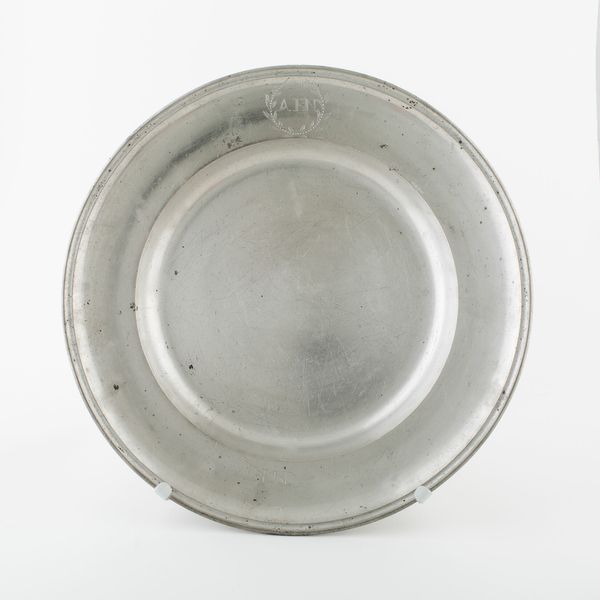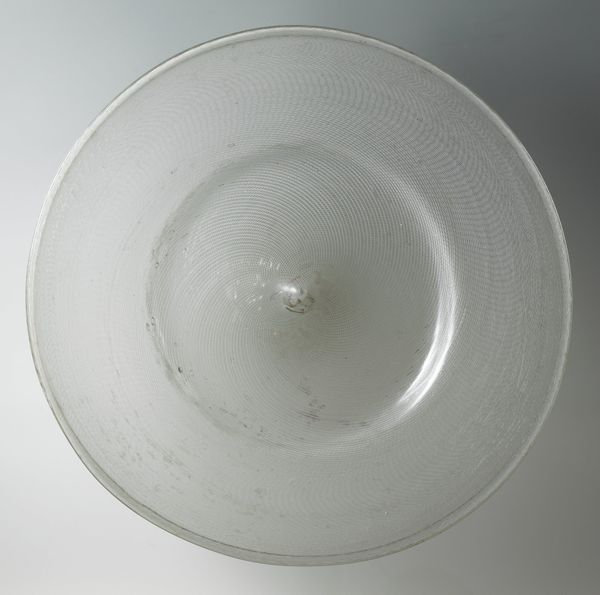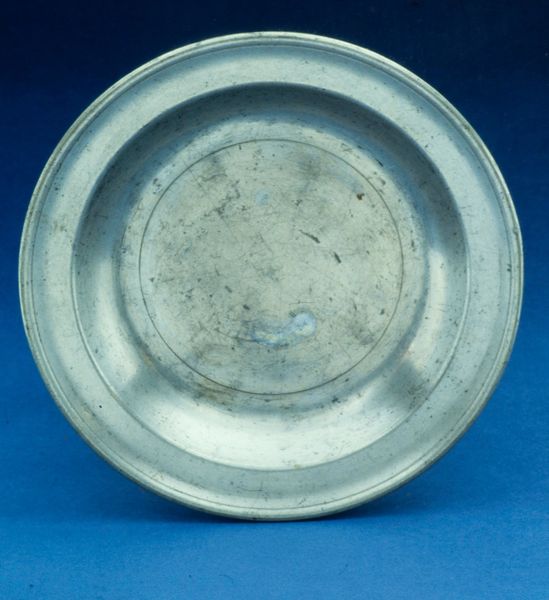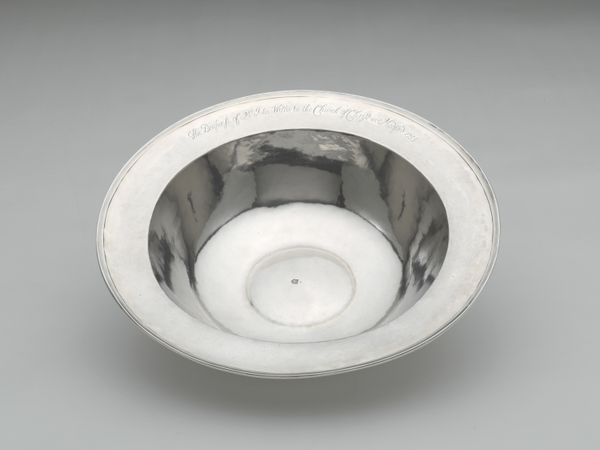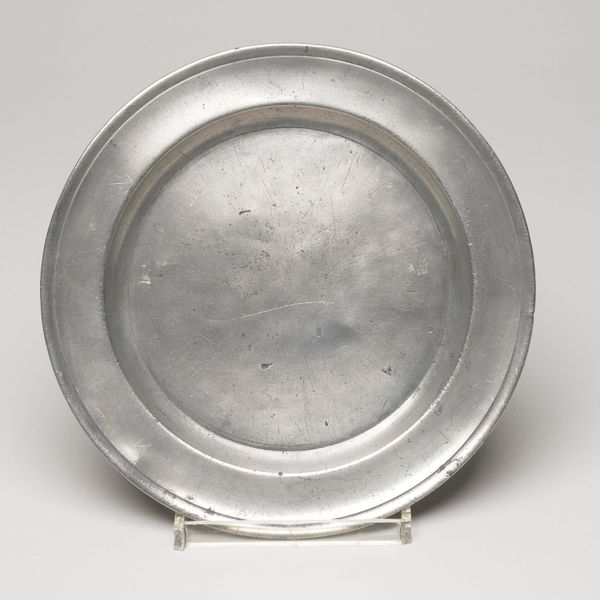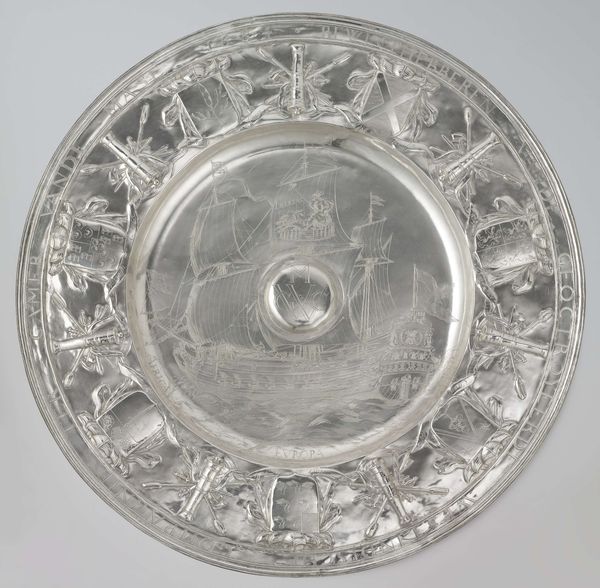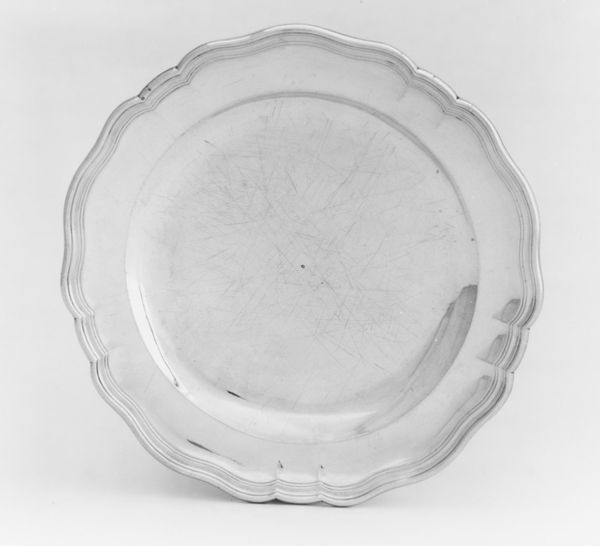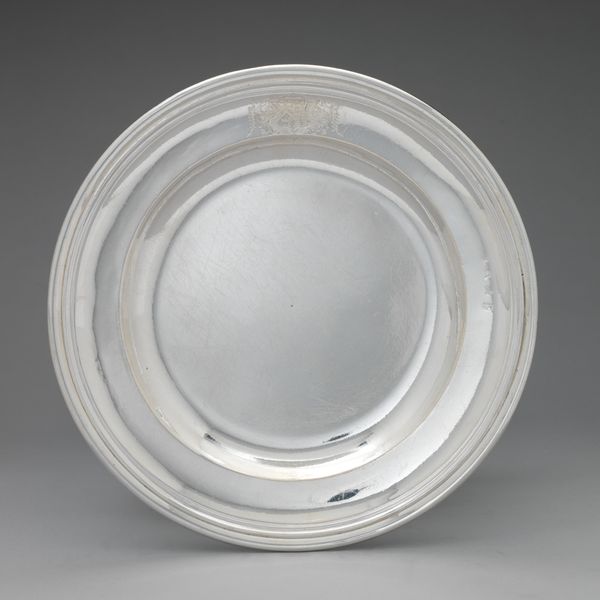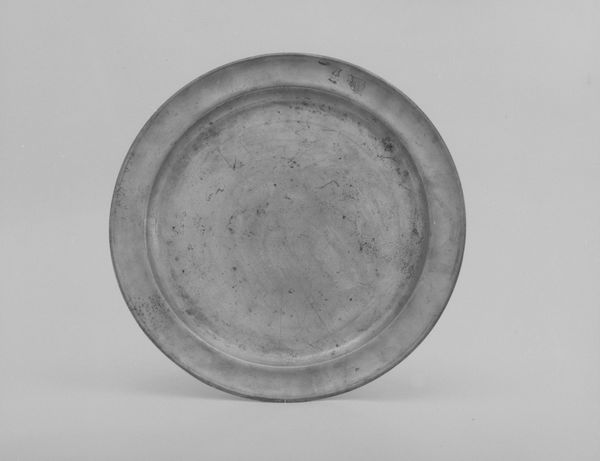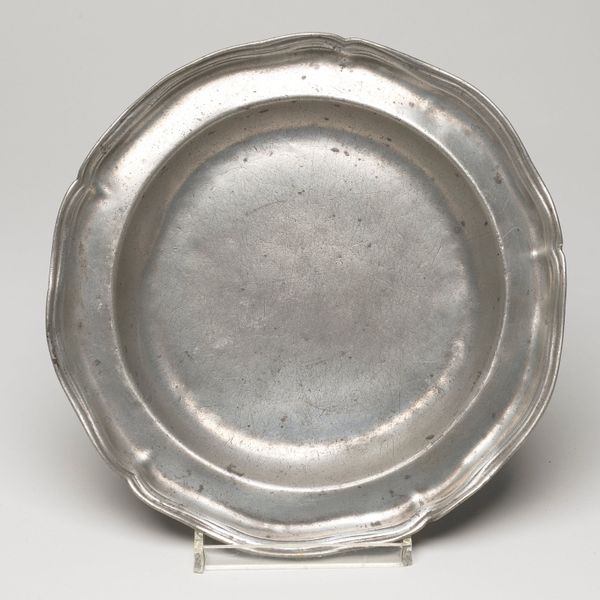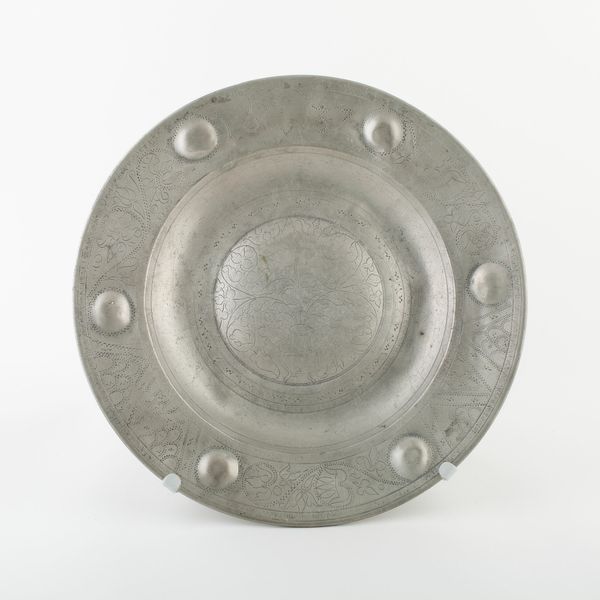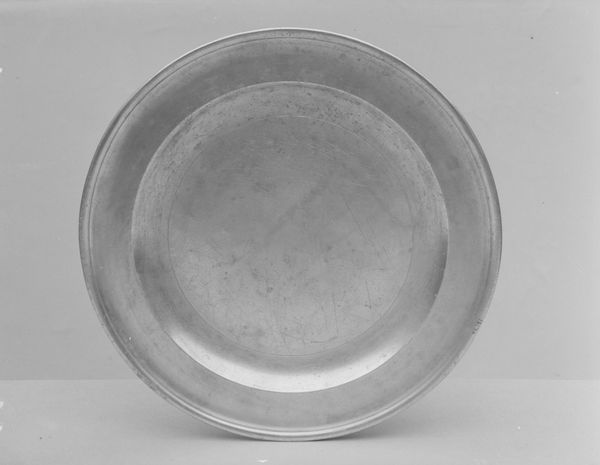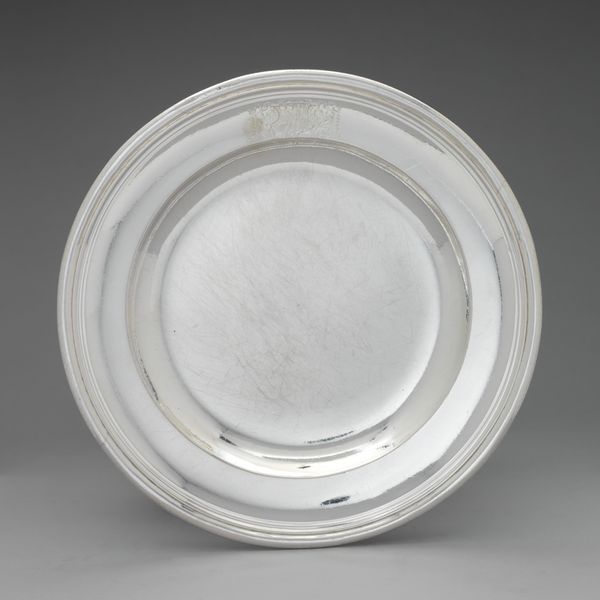
metal, ceramic
#
dutch-golden-age
#
metal
#
ceramic
#
stoneware
#
ceramic
Dimensions: height 4.8 cm, diameter 49.8 cm, weight 2157 gr
Copyright: Rijks Museum: Open Domain
Editor: This is the "Ewer and basin with the arms of Vlissingen" made in 1608. It is a stunning metal and ceramic piece by Jacques Bogaert. It looks so pristine and perfect. What should we consider when viewing a piece like this? Curator: We have to consider the means of production for luxury goods. A piece like this tells a lot about Vlissingen's place in early 17th century trade, doesn't it? Who had access to stoneware? What would it have signified for a city to commission a piece like this with their arms displayed so prominently? Editor: It feels like it’s about showing wealth. Is that accurate? Curator: Wealth, yes, but also consider *how* that wealth was generated. Vlissingen was a major port and heavily involved in maritime trade and even privateering at this time. The production of such wares involved a network of miners extracting raw materials, artisans crafting the ceramic or metal, and merchants distributing the finished product. What do you think about the social implications of commissioning such art objects? Editor: That’s interesting! So the object itself isn't just beautiful; it’s also a sign of this city's economic activity, tied up with international trade routes, and also with, as you mention, who was involved in both production and consumption of luxury goods? Curator: Exactly. It speaks volumes about labour, global exchange, and social stratification during the Dutch Golden Age. The value lies not just in the final piece but in the entire production and circulation system surrounding it. Editor: Thanks. I learned that an object tells the whole story of labour. I now see that such works can encapsulate larger historical processes. Curator: Yes, seeing these pieces, which may at first glance appear beautiful but mute, is to understand production chains and, in doing so, the socio-economic realities of their creation.
Comments
rijksmuseum about 2 years ago
⋮
Servants would go around with ewers and basins at the beginning and end of formal dinners. Water was poured from the ewer over the hands of the distinguished guests, and the dirty water was caught in the basin. This ewer and basin were the property of Vlissingen. The city’s coat of arms – a crowned bottle – and its motto are engraved in the centre of the basin.
Join the conversation
Join millions of artists and users on Artera today and experience the ultimate creative platform.
